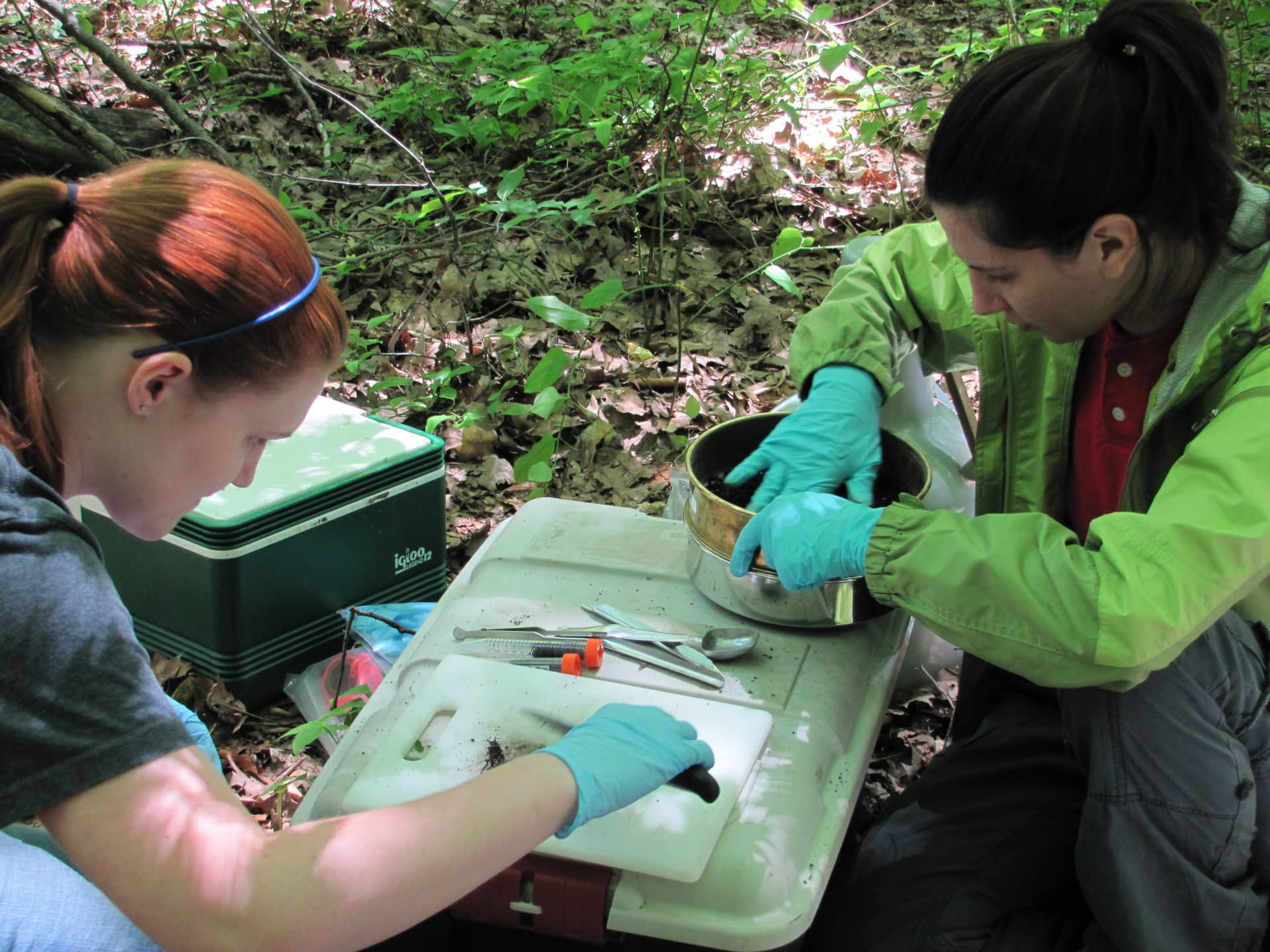Soil and Microbial EcologyAcidic precipitation and forest health
In progress
The Question
What are the interactive effects of soil acidity and phosphorus availability on forest health?
Project Summary
Acid precipitation, resulting from burning of fossil fuels, is a chronic problem in areas near population centers or concentrations of industrial activity. The northeastern United States is one area that historically has received particularly high levels of acid precipitation. The resulting ecosystem acidification can impact plants, soils, and water. In hardwood forests, such as those common in Northeast Ohio, there is concern that long-term acidification of forests can decrease the availability of essential nutrients such phosphorus and calcium in soil, which could result in poor forest health and forest decline. In 2009, Holden scientists received funding from the National Science Foundation to study the interacting effects of soil acidity and phosphorus availability in deciduous hardwood forests. The soils of forested plots at Holden and Squire Valleevue and Valley Ridge Farms (Case Western Reserve Universities Experimental Farm) were manipulated to increase soil pH and fertility using crushed limestone (lime) and phosphorus fertilizer, respectively. Since these applications, we have been studying the long-term effects of this reversal of soil acidification and addition of phosphorus on forest plants, including trees and native wildflowers, and belowground organisms, including fungi and bacteria. We have conducted several studies on mycorrhizal fungi, as these plant symbionts are important for forest health. This study has shown the importance of belowground organisms for freeing up nutrients bound in organic matter and the importance of mycorrhizal fungi for acquiring nutrients for their plant hosts in acidic, nutrient poor conditions. Ongoing work is investigating the long-term effects of the lime and phosphorus applications on tree growth and allocation.
Keywords
Microbiome, mycorrhizae, forest, pH, phosphorus, NSF, soil
In the field
Select Publications
- Burke DJ, SR Carrino-Kyker, CF Chervenak, AJ Hoke, and CR Hewins. 2021. The function of root mat fungal communities: Changes in response to pH and phosphorus addition. Plants People Planet DOI: 10.1002/ppp3.10193
- Carrino Kyker SR, KP Coyle, LA Kluber and DJ Burke. 2020. Fungal and bacterial communities exhibit consistent responses to reversal of soil acidification and phosphorus limitation over time. Microorganisms 8: 1. DOI: 10.3390/microorganisms8010001
- Carrino-Kyker SR, LA Kluber, KP Coyle, and DJ Burke. 2017. Detection of phosphate transporter genes from arbuscular mycorrhizal fungi in mature tree roots under experimental soil pH manipulation. Symbiosis 72: 123-133. DOI: 10.1007/s13199-016-0448-1
- Carrino-Kyker SR, LA Kluber, SM Petersen, KP Coyle, CR Hewins, JL DeForest, KA Smemo, and DJ Burke. 2016. Mycorrhizal fungal communities respond to experimental elevation of soil pH and P availability in temperate hardwood forests. FEMS Microbiology Ecology 92: fiw024. DOI: 10.1093/femsec/fiw024
- Kluber LA, SR Carrino-Kyker, KP Coyle, JL DeForest, CR Hewins, AN Shaw, KA Smemo, and DJ Burke. 2012. Mycorrhizal response to experimental pH and P manipulation in acidic hardwood forests. PLoS ONE 7: e48946. DOI: 10.1371/journal.pone.0048946
- DeForest JL, KA Smemo, DJ Burke, HL Elliott, and J Becker. 2012. Soil microbial responses to phosphorus addition and pH manipulation in acidic temperate deciduous forests. Biogeochemistry 109: 189–202. DOI: 10.1007/s10533-011-9619-6









